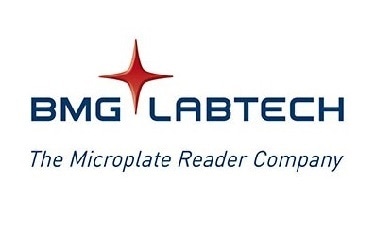Cancer vaccines can be used either in the prevention or the treatment of cancer. Today, preventative vaccination is only a partial possibility, addressing viruses that are frequently implicated in the onset of cancer, such as human papillomavirus or hepatitis B.
A type of immunotherapy currently being investigated is therapeutic cancer vaccination; which is being tested as a potential novel treatment for cancer. Thus, therapeutic cancer vaccines will be the focus of this article.

Image credits: Shutterstock | Von crystal light
Researchers are hard at work trying to analyze if the main principle of vaccines, which is to stimulate the immune system, can also be used in the identification and destruction of cancer cells.1 Traditional vaccines keep viral and bacterial infections in check, whereas cancer vaccines should animate the immune system to control cancer cells.
It is still early days in the development of cancer vaccines. Thus far, they are mainly only available during trials, being tested as therapies. However, certain clinical trials have shown promising results, which has led to the first cancer vaccine achieving FDA approval.
This vaccine has been developed for advanced prostate cancer, thereby not only providing a new and innovative approach to cancer management, but also paving the way for future vaccines, both in terms of design and optimization.2,3
Immune Responses to Cancer
The body’s inherent immune response to cancer involves two main types of white blood cells: B cells and T cells. The former category produces antibodies that are designed to react to toxins, bacteria, and a limited amount of cancer cells, thereby flagging them up for attack. However, a number of substances escape this process of attack and end up growing inside the cells of the body.
In contrast, T cells can recognize when a cell has become abnormal. Moreover, once identified as abnormal, T cells then proceed to destroy the cells. Once the destruction of the abnormal cells is complete, both B cells and T cells turn into specialized memory cells, capable of being reactivated in case the body ever encounters an abnormal substance or cell again.1
In cases where a cell develops cancerous properties, it ends up dividing in an uncontrolled manner. Often, the immune system fails to recognize this process as abnormal, and, as a result, the cancerous cell continues to multiply and grow. Cancer vaccine research aims to utilize the body’s own immune system in such a way that makes it able to recognize cancer cells as abnormal, and further mount an attack in order to destroy them.1
Currently, scientific researchers are analyzing several different strategies of vaccines, both clinically and preclinically. However, there is a requirement for much more work, if they are to fully comprehend the reliability and effectiveness of the vaccines, as well as which cancers these vaccines may be in a position to treat.2,4
Types of Vaccine
Currently, the most common types of vaccines belong to the following types: antigen vaccines, whole cell vaccines, and dendritic cell vaccines. In addition, common vaccines also include DNA vaccines and anti-idiotype vaccines.
Antigen vaccines are created from the abnormal antigens present on the surface of cancer cells. How this works is that the antigen stimulates the immune system and forces it to mount an attack on cancer cells that exhibit signs of containing that same antigen.4
In comparison, the second type of vaccine, the whole cell vaccine, utilizes the entire cancer cell (rather than just its antigen). The cancer cell is extracted from the patient during surgery.
The cancerous cells are then altered in order to enhance the chance of them being attacked by the body’s immune system. This altered cell is then injected back into the patient. As a consequence, the immune system then attacks these cells or any cells it may recognize as similar.5
What’s more, dendritic cell vaccines go a step further, by being composed of the dendritic cells that assist in the recognition and attack of abnormal cells by the body’s immune system.
Dendritic cell vaccines can break cancer cells into smaller components (including antigens), which are then displayed so that T cells can recognize them. Thus, the T cells then attack any cell in the body which exhibits the same or similar cell surface component.5
Another category called DNA vaccines are composed of DNA sequences from cancer cells. They are designed in such a way to improve the ability of the immune system to respond to, as well as destroy cancer cells.
Finally, the last category of vaccines is the anti-idiotype vaccine, which functions by triggering the immune system and stimulating the generation of antibodies. These antibodies are then tasked with the responsibility of binding to and flagging up cancer cells for attack.4
Furthering Cancer Vaccine Studies with Microplate Readers
In a huge cross-section of the research for the development and improvement of cancer immunotherapies, microplate readers play an extremely crucial role. These multimodal, multi-well instruments allow for various absorbance, fluorescence and luminescence measurements to be made simultaneously.
In 2018, a study conducted by Japanese researchers utilized the PHERAstar® from BMG LABTECH. This study witnessed the creation of a time-resolved fluorescence assay with capabilities to analyze the effects of interleukin 18 (IL-18) on natural killer (NK) cells that were derived from patients suffering with lung cancer.
The team was able to demonstrate that IL-18 triggered the vigorous and aggressive proliferation of NK cells, thus conferring to them an antigen-presenting cell (APC) type phenotype. The APC-like NK cells were able to demonstrate anti-tumor activity and efficiently kill tumor cells. The latter suggested that the stimulation of NK cells could prove to be a beneficial immunotherapy approach in the treatment of lung cancer.6
Furthermore, in another study published in 2018, researchers used BMG LABTECH’s CLARIOstar in a trial with the aim to develop a messenger RNA (mRNA)-based vaccine. These vaccines have been proven to be potent activators of the cytotoxic immune system, however their application has been hindered by their vulnerability to nucleases and their difficulty in entering APCs.
Using the CLARIOstar, the team was able to demonstrate that encapsulating an mRNA-encoding antigen with a certain nanoparticle triggered the effective stimulation of dendritic cell maturation, and thus promoted the activation and proliferation of antigen-specific T cells equipped with a robust anti-tumor response.
Using a mouse model, the approach was able to slow tumor growth in an aggressive form of lymphoma, thus proving to be a promising method for the delivery of the mRNA vaccine.7
The above examples strongly demonstrate that BMG LABTECH devices play an important role in the study of cancer vaccines. Considering that the deadly blow for tumor cells is often mediated by immune cells, suitable assays measure the death of cells only in tumor cells, but not in the triggering immune cells.
To accomplish the demanding task of measuring cancer cell death mediated by natural killer cells, a time-resolved fluorescence-based method should be applied (presented in application note 192).8 Thus, it can be proved that the PHERAstar is an optimal device for high throughput screening in all detection modes, thus enabling the screening of numerous conditions, concentrations, and compounds.
On the other hand, the CLARIOstar Plus focuses on maximum flexibility. It works for cancer vaccine research by quantifying cytokines with simple ELISAs, while also enabling multiplex kinetic cell assays with the atmospheric control unit (ACU).
With its newly developed enhanced dynamic range (EDR) technology, in combination with its fast autofocus function, the researcher finds it easier to select the right settings and facilitate assay development.9.
What’s more, with ongoing efforts being made to improve cancer immunotherapy to enable a safer and more effective targeting of tumors, BMG LABTECH’s microplate devices function as vital instruments that make cancer vaccination an achievable reality.
References and Further Reading
- Macmillan.org.uk. Cancer vaccines. Available at: https://www.macmillan.org.uk/cancerinformation/cancertreatment/treatmenttypes/biologicaltherapies/vaccines.aspx
- Guo, C et al. Therapeutic Cancer Vaccines: Past, Present and Future. Adv Cancer Res. 2013; 119: 421–475.Available at: https://www.ncbi.nlm.nih.gov/pmc/articles/PMC3721379/
- American Cancer Society. Cancer vaccines. Available at: https://www.cancer.org/treatment/treatments-and-side-effects/treatment-types/immunotherapy/cancer-vaccines.html
- Cancer Research UK. Vaccines to treat cancer. Available at: https://www.cancerresearchuk.org/about-cancer/cancer-in-general/treatment/immunotherapy/types/vaccines-to-treat-cancer
- American Cancer Society. What’s new in cancer immunotherapy research? Available at: https://www.cancer.org/treatment/treatments-and-side-effects/treatment-types/immunotherapy/whats-new-in-immunotherapy-research.html
- Senju, H et al. Effect of IL-18 on the Expansion and Phenotype of Human Natural Killer Cells: Application to Cancer Immunotherapy. International Journal of Biological Sciences 2018;14(3):331-340. Available at: https://www.ncbi.nlm.nih.gov/pmc/articles/PMC5859478/
- Fan, Y et al. Cationic lipid-assisted nanoparticles for delivery of mRNA cancer vaccine. Biomaterials Science 2018;6:3009-3018 Available at: https://pubs.rsc.org/en/content/articlelanding/2018/bm/c8bm00908b/unauth#!divAbstract
- N.M. Patterson et al. A DELFIA® time-resolved fluorescence cell-mediated cytotoxicity assay performed on the PHERAstar® FS. 2009, BMG LABTECH.https://www.bmglabtech.com/fileadmin/06_Support/Download_Documents/Application_Notes/AN192.pdf
- BMG LABTECH. CLARIOstar Plus. Available at: https://www.bmglabtech.com/clariostar-plus/
About BMG LABTECH GmbH
BMG LABTECH has been committed to producing microplate readers for more than twenty years. By focusing on the needs of the scientific community, the company’s innovative microplate readers have earned the company the reputation of being a technology leader in the field.
BMG LABTECH has developed a wide range of dedicated and multi-mode microplate readers for life sciences applications and high-throughput screening.
All BMG LABTECH microplate readers are "Made in Germany" and are conceived, developed, assembled, and tested entirely at our headquarters in Germany.
Since our establishment in Offenburg, Germany in 1989, BMG LABTECH has expanded to offer a worldwide sales and support network with offices in the USA, UK, Australia, Japan and France. Our subsidiaries, regional offices and distributors are committed to bringing you innovative microplate reader technology with the quality and reliability you expect from a German company.
Our staff includes engineers and scientists from the fields of biology, biochemistry, analytical chemistry, and physics.
Sponsored Content Policy: News-Medical.net publishes articles and related content that may be derived from sources where we have existing commercial relationships, provided such content adds value to the core editorial ethos of News-Medical.Net which is to educate and inform site visitors interested in medical research, science, medical devices and treatments.